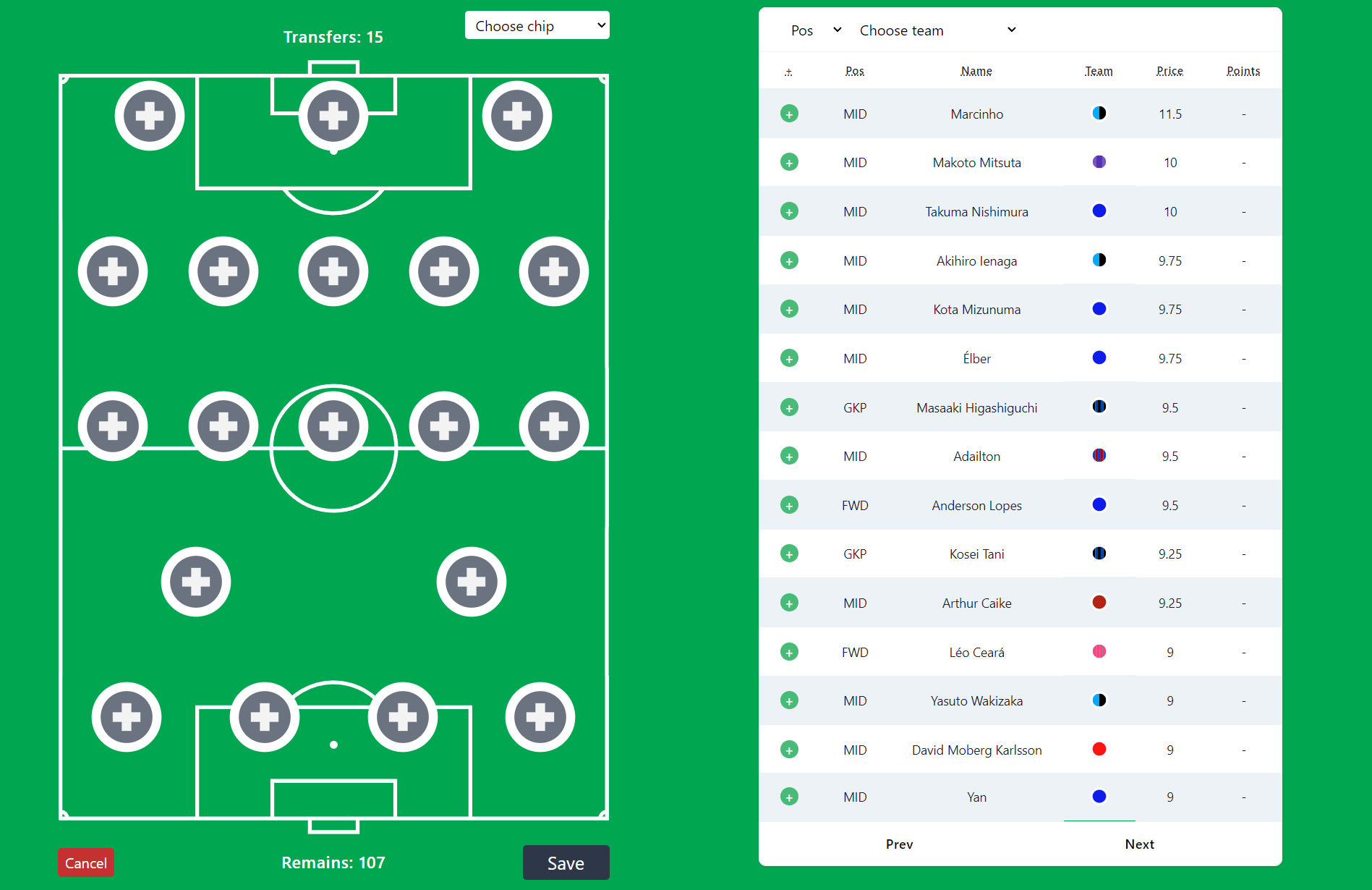With less than two weeks left before the start of J.League Fantasy, tipster Kurasawa shares his beginner’s guide on how to get started with the game on Foontasy.
On February 17th, Friday begins the new season of Japanese top-flight football, known as J.League. Kawasaki Frontale will try to reclaim the title they had for two years before it was taken away from them by Yokohama F. Marinos. Iniesta and his Vissel Kobe are going to bounce back from last season’s 13th-place finish. Ashito Aoi will try to make his mark with Tokyo Esperion (oh, sorry, that’s from a manga).
Follow all the action of the upcoming season, by playing J.League Fantasy on our platform called Foontasy!
How J1 League Fantasy on Foontasy Works
It will take long to explain all the differences from traditional fantasy games, so let’s start with a short comparison with FPL in the table below.
| FPL | J.League Fantasy | |
|---|---|---|
| You can transfer in a forward for a defender | ❌ | ✅ |
| You aren't hurt by poor captain and bench choices | ❌ | ✅ |
| You can loan a player for a gameweek | ❌ | ✅ (limited) |
| You can make a transfer after deadline | ❌ | ✅ (limited) |
| You get additional transfers if matches get postponed | ❌ | ✅ |
| You don’t have to check possible price changes every day | ❌ | ✅ |
| Very poor result in DGW doesn’t ruin your season | ❌ | ✅ |
Squad Selection
This is how the “Create Team” page looks. You have a budget of 107 units to choose 15 players.

Usually, in Fantasy games you need to pick two goalkeepers, five defenders, five midfielders, and three forwards (2–5–5–3). But in our game you can choose from these:

Wide choice, isn’t it?
Let me set up a team of Japanese players with kanji 野 (plain, field, pronounced as “no”) in their surname. It’s a 1–5–8–1 formation.

“Wait a minute, how to choose the captain and set the bench?”
There is no captain or bench on J.League Fantasy! All your players are eligible for points!
“How points are given then?”
11 players will get the points. Which ones?
- The ones who received a yellow/red card or missed a penalty.
- And then the ones who scored the most points.
Now you won’t be angry when your player hauled but you didn’t make him a captain like most of your opponents. And you won’t be angry when a player you benched returns.
Post Deadline
In traditional fantasy games, you can’t make changes after the deadline. Your player is not starting? Suffer. But not in our J.League Fantasy game! We have mini-chips, using which you can:
- Make a transfer after the deadline (post-deadline transfer).
- Loan a player for a gameweek before and after the deadline (free-hit transfer and free-hit post-deadline transfer).
But there’s a limited number of times you can do this. Post-deadline transfers, free-hit transfers, and free-hit post-deadline transfers form a shared bank of 12 mini-chips during the season.
BUT! After the deadline, during GW1 you’ll have an unlimited amount of post-deadline and free-hit post-deadline transfers!
AND ALSO! When GW1 ends, you’ll have an unlimited amount of free transfers again before the GW2 deadline! After that only two free transfers between gameweeks. If you want to change the whole team again, there’s a Wildcard chip for you, which can be used one time only.
How Else Does Foontasy Differ From Traditional Fantasy Games?
- Very dynamic prices. A player’s price in J.League Fantasy can change by one unit in just four gameweeks! Price formation depends on the player’s tempo of scoring points, not on managers making transfers. So you don’t have to check every day which players’ prices will change. They’ll be changed right after the end of the gameweek.
- Scoring. Goalkeepers earn one point for every TWO saves, not three. Defenders earn one point per six clearances (to make center-backs more attractive). Midfielders get six points for goals and four for assists, but no points for a cleansheet.
- Postponements. For every two postponed matches, you’ll be given one free transfer and +1 to your bank of mini-chips.
- Double gameweeks. In GWs where a team plays two matches, the “Points from match one + Points from match one = Points from double GW” formula will not work. Instead, a player will get points only from the match in which he scored the most points.
- Budget reset. Every six gameweeks (before GW7, GW13, GW19, GW25, and GW31) your budget will be reset at an initial sum of 107 units. And if your squad costs more than 107, then you have to cheapen your squad to fit the budget, or else you will not be able to make changes in your gameweek squad. It’s not against the rules to leave your team with an above-limit budget by not making transfers.
Lazy League
For those who don’t want to make transfers every gameweek all season, a special tournament called “Lazy League” was created. To participate, you need to make no more than 22 transfers + mini-chips (the countdown starts after GW2, and Wildcard is allowed).
Well, that’s all!
CREATE TEAM | Full rules | Twitter
You can find additional J.League Fantasy resources for the 23/24 season here.

Big fantasyholic who runs his own fantasy tournaments and writes previews to them


[…] our game works, you can read in this article. Here I’m previewing the new season of J.League […]
[…] and writing detailed previews such as this. Currently, I do only J.League Fantasy (open this introduction article in the new tab to read it later). I stopped playing FPL one year and a half ago because I got tired […]